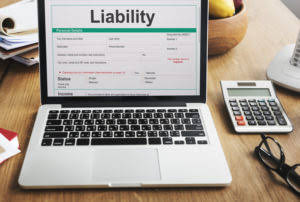
If they don’t balance, there may be some problems, including incorrect or misplaced data, inventory or exchange rate errors, or miscalculations. It’s the amount of money that would be left if all assets were sold and all liabilities paid. This money belongs to the shareholders, who may be private owners or public investors. Familiarity with your balance sheet will give you an under-the-hood look at company finances. Accounts should learn how to analyze a balance sheet for the most insight.
A Crucial Understanding
The purpose of a balance sheet is to give interested parties an idea of the company’s financial position, in addition to displaying what the company owns and owes. It is important that all investors know how to use, analyze and read a balance sheet. Long-term liabilities are debts and other non-debt financial obligations, which are due after a period of at least one year from the date of the balance sheet. For instance, a company may issue bonds that mature in several years’ time.

Add Total Liabilities to Total Shareholders’ Equity and Compare to Assets
Authorized stock refers to the maximum number of shares a company can issue, while issued stock is the number of shares the company has sold. Outstanding stock represents the number of shares held by the shareholders, and it takes into account any shares that have been repurchased by the company. Apple is a highly profitable and efficient business growing rather quickly, even with its large size. In fact, Apple’s market value is currently about $2.7 trillion — about 43 times its shareholders’ equity or book value. The key point is that these can typically be readily converted into cash the company can use.
How to automate balance sheet reporting with QuickBooks
You need to know your return on assets (ROA), a metric used by investors and owners alike. Bill’s quick ratio is pretty dire—he’s well short of paying off his liabilities with cash and cash equivalents, leaving him in a bind if he needs to take care of that debt ASAP. Annie’s Pottery Palace, a large balance sheet explained for dummies pottery studio, holds a lot of its current assets in the form of equipment—wheels and kilns for making pottery. You record the account name on the left side of the balance sheet and the cash value on the right. All programs require the completion of a brief online enrollment form before payment.
While accountants and finance specialists are trained to read and understand these documents, many business professionals are not. Shareholder’s equity, also called owner’s equity, refers to a company’s net worth. You can calculate equity in a business by subtracting a business’s liabilities from its assets. Balance sheets exist, in part, to calculate equity and share a firm’s worth with investors. So, if a business liquidates its assets, owners know how much they will receive. Personal balance sheets and balance sheets for small businesses can record changes in accounts.
Thankfully, you can plug balance sheet information into various ratios for financial ratio analysis. Assets refer to anything a business owns that offers current or future value. The assets section on a balance sheet lists everything your company retains with value.

Identify your assets as of your reporting date.
Beyond the editorial, an annual report summarizes financial data and includes a company’s income statement, balance sheet, and cash flow statement. It also provides industry insights, management’s discussion and analysis (MD&A), accounting policies, and additional investor information. A balance sheet is meant to depict the total assets, liabilities, and shareholders’ equity of a company on a specific date, typically referred to as the reporting date. Often, the reporting date will be the final day of the accounting period. While the financial statements are closely intertwined and necessary to understand a company’s financial health, the balance sheet is particularly useful for ratio analysis. By analyzing these components, investors can make informed decisions on potential investments and evaluate the company’s overall financial stability.
- All such information is provided solely for convenience purposes only and all users thereof should be guided accordingly.
- Conceptually, a company’s assets refer to the resources belonging to the company with positive economic value, which must have been funded somehow.
- The other two are the Profit and Loss Statement and Cash Flow Statement.
- By analyzing these components, investors can make informed decisions on potential investments and evaluate the company’s overall financial stability.
- When you hear that a company “has a lot of cash,” it typically isn’t actually holding all of it in cash.
- To help you, we’ll explain what goes on a balance sheet and how to leverage balance sheets for growth.
- The shareholder’s equity section is essential from the point of view of valuation.
- Assets are on the top of a balance sheet, and below them are the company’s liabilities, and below that is shareholders’ equity.
- Includes non-AP obligations that are due within one year’s time or within one operating cycle for the company (whichever is longest).
Activity ratios focus mainly on current accounts to show how well the company manages its operating cycle (which include receivables, inventory, and payables). These ratios can provide insight into the company’s operational efficiency. Current assets are short-term assets that are expected to be converted into cash or https://www.bookstime.com/ used up within one year. Some common examples of current assets include cash and cash equivalents, inventory, and accounts receivable. Cash and cash equivalents represent the most liquid assets and could include items like checking accounts, savings accounts, and highly liquid investments such as money market funds.
